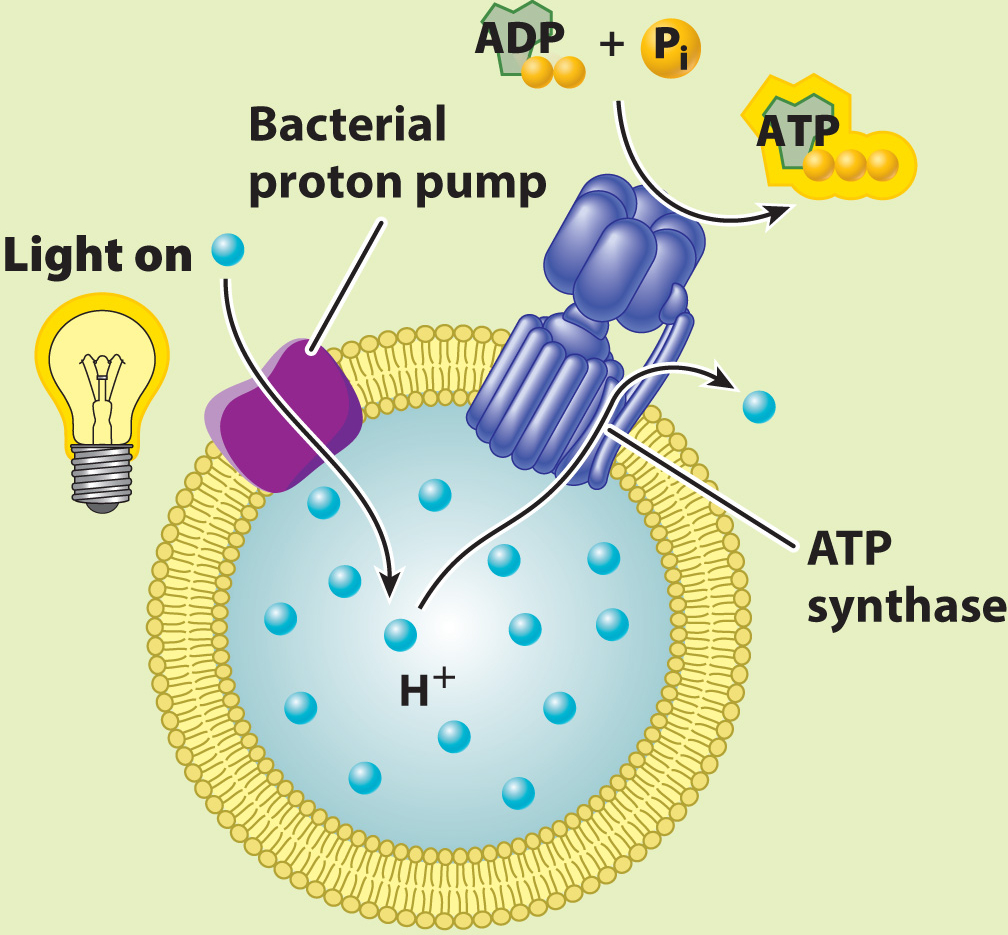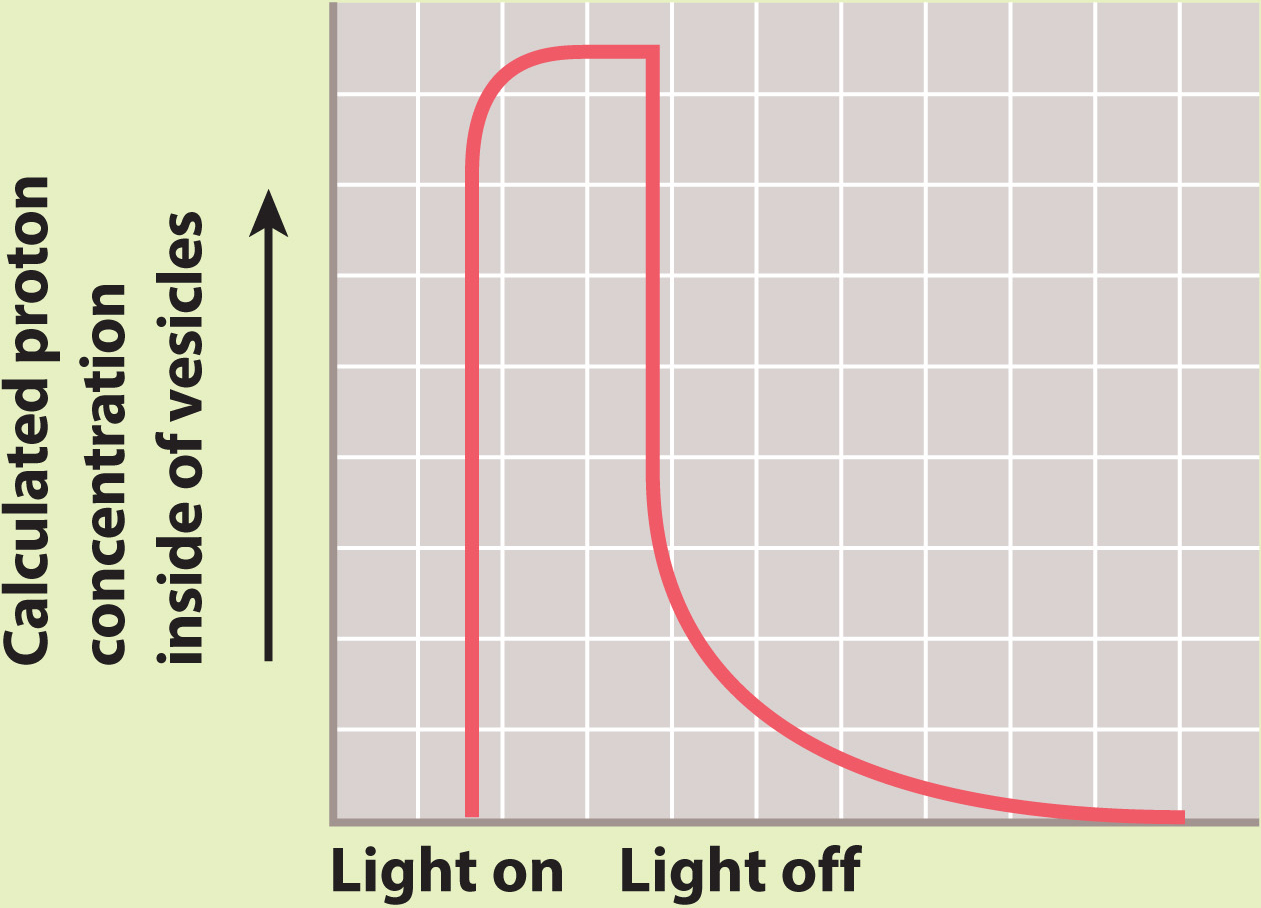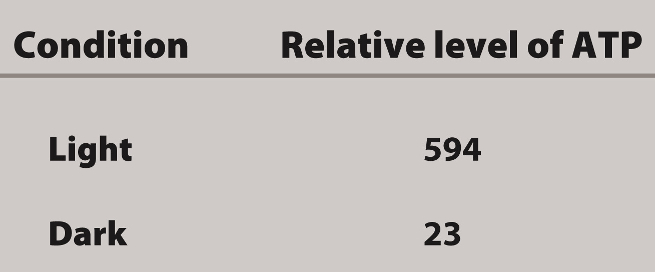HOW DO WE KNOW?
FIG. 7.12
Can a proton gradient drive the synthesis of ATP?
BACKGROUND Peter Mitchell’s hypothesis that a proton gradient can drive the synthesis of ATP was met with skepticism because it was proposed before experimental evidence supported it. In the 1970s, biochemist Efraim Racker and his collaborator Walther Stoeckenius tested the hypothesis.
EXPERIMENT Racker and Stoeckenius built an artificial system consisting of a membrane, a bacterial proton pump activated by light, and ATP synthase.

They measured the concentration of protons in the external medium and the amount of ATP produced in the presence and absence of light.
RESULTS In the presence of light, the concentration of protons increased inside the vesicles, suggesting that protons were taken up by the vesicles.

In the dark, the concentration of protons returned to the starting level. ATP was generated in the light, but not in the dark.

INTERPRETATION In the presence of light, the proton pump was activated and protons were pumped to one side of the membrane, leading to the formation of a proton gradient. The proton gradient, in turn, powered synthesis of ATP by ATP synthase.
CONCLUSION A membrane, proton gradient, and ATP synthase are sufficient to synthesize ATP. This result provided experimental evidence for Mitchell’s hypothesis.
SOURCES Mitchell, P. 1961. “Coupling of Phosphorylation to Electron and Hydrogen Transfer by a Chemiosmotic Type of Mechanism.” Nature 191:144–